How to organise living room shelves – 10 ways to create a beautifully ordered display
Organise your living room shelves so they’re as practical as they are pretty
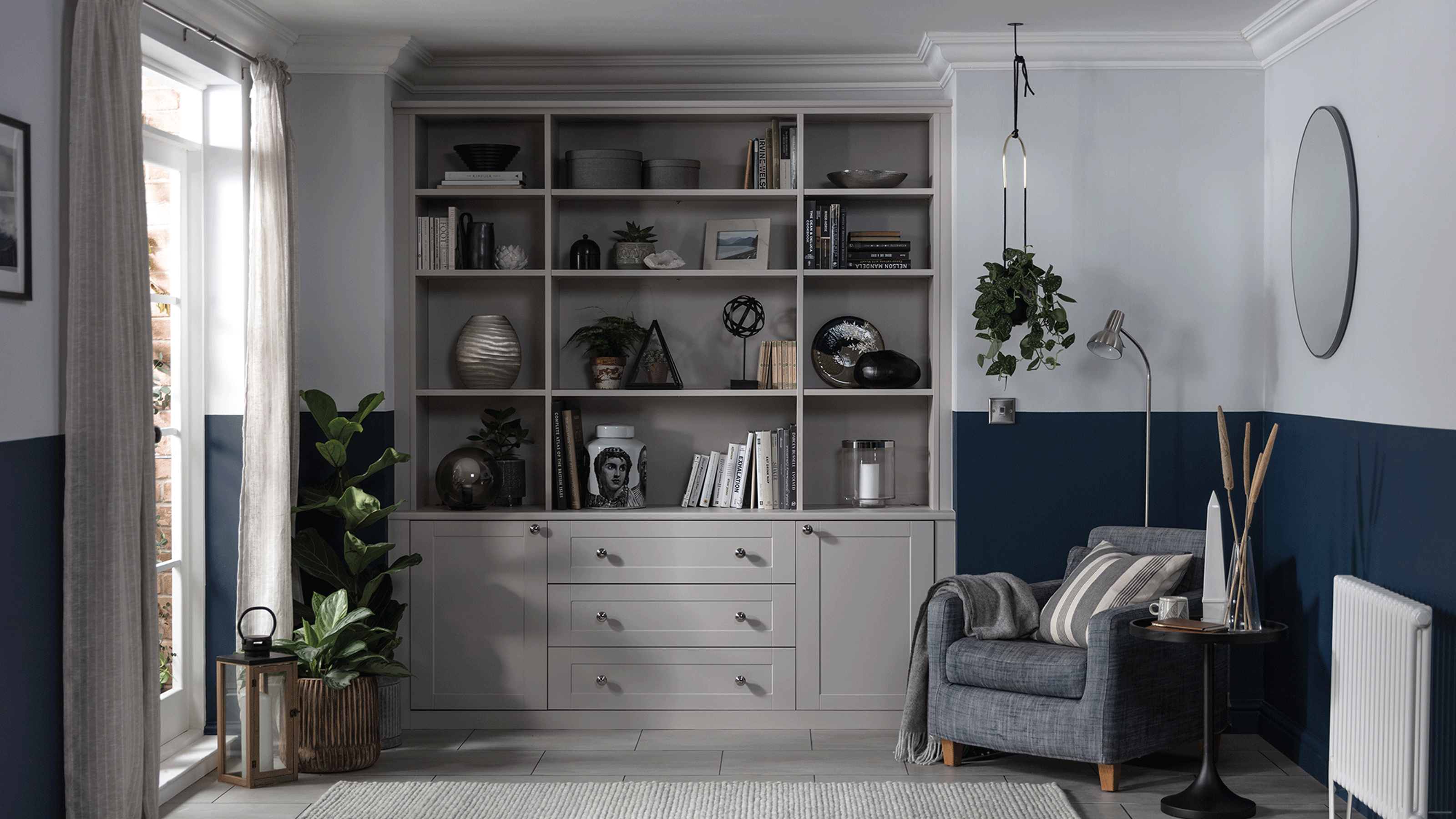
If it’s a calm, relaxing living room you’re after, understanding how to organise living room shelves so they’re neat, tidy and pleasing to look at is essential; there’s nothing like clutter to make you feel on edge.
Having said that, the beauty of living room shelving ideas is that you can afford a little more creativity than perhaps you would in other areas of the home (think bathrooms and kitchens for example, where practicality tends to take priority over prettiness), so you’ll want to avoid being too prescriptive with where you place things – a happy balance is key.
‘When it comes to arranging living room shelves, I’m a big fan of organised disorgansation. It’s fun mixing different items. perhaps a small stack of interesting books, alongside a photograph, or a shell found on holiday, for example. I’m constantly playing around with things, so don’t be afraid to experiment, but always bear in mind – less is usually more,' says Caroline Gardner, founder of Caroline Gardner.
How to organise living room shelves
How you organise living room shelves will depend very much upon what it is you actually want from them, so you’ll need to have a think about this before you do anything.
How do you want them to be used? What do you want to display – books, photos, artwork? Do you need to factor in storage? Knowing what you want and/or need in advance will make things easier, giving you more time to focus on aesthetics.
Once you’ve got a good idea of what you’re trying to achieve, it’s time to start thinking about how you’re going to achieve it. We’ve done the hard work for you – here’s how to organise living room shelving, according to those-in-the-know…
1. Discard items you don’t love to look at
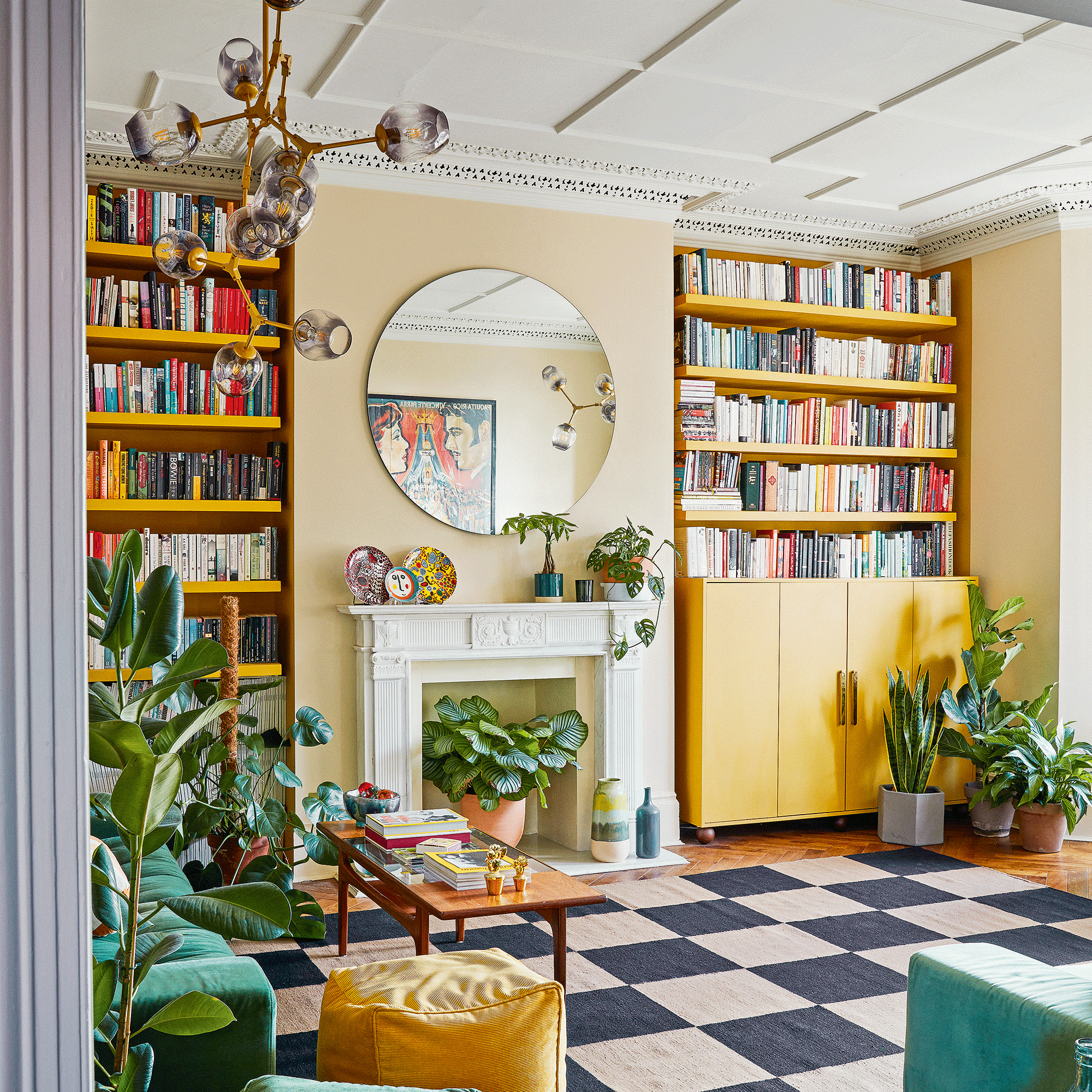
If you’re re-organising an existing shelving display, it’s always a good idea to start with a good declutter. Empty your shelves completely (and give them a good clean), then go through each item, one by one. Before putting it back, ask yourself whether you really want to. Just because you loved it once, doesn’t mean you do now!
Sign up to our newsletter for style inspiration, real homes, project and garden advice and shopping know-how
The same ‘decluttering’ principle also applies when curating a display from scratch. Unless an item brings you joy to look at, or it serves a practical purpose of some kind, don’t include it in your living room shelving display, period.
2. Stick to a theme
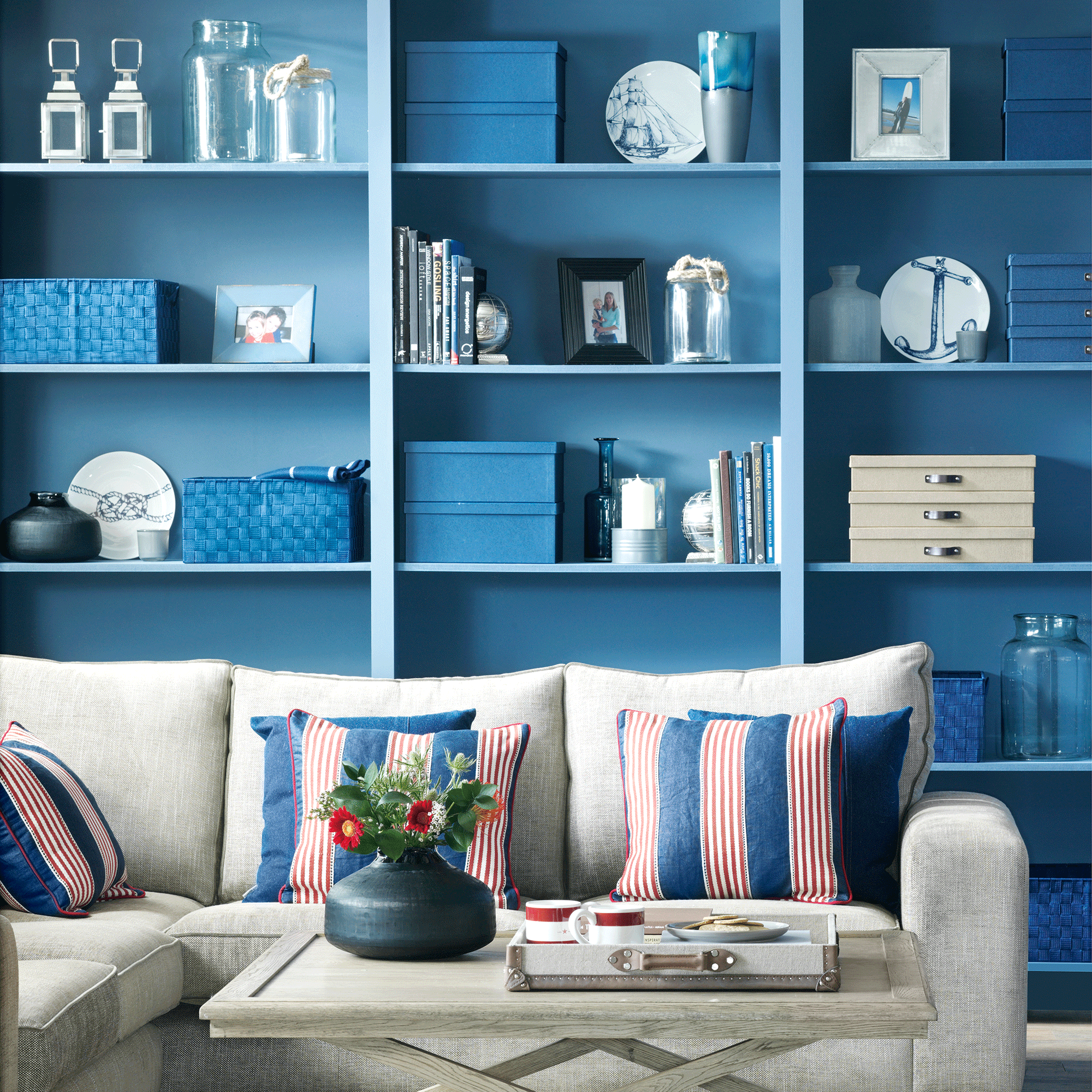
If you’re after a neat, cohesive look, being strict on colour schemes is a good idea. Picking out key tones within your living room ideas, or even just a theme, will keep displays looking considered – you could even go so far as painting the shelves the same colour as your walls if you wanted to.
‘Creating a shelf that’s in keeping with the wider scheme allows continuity within your room, however, if you’re feeling adventurous, you could select a statement shade and bring in accessories, such as photo frames, candles and vases for a contrasting pop of colour’, says Jonathan Clark, creative director at Shelved.
3. Incorporate hidden storage…
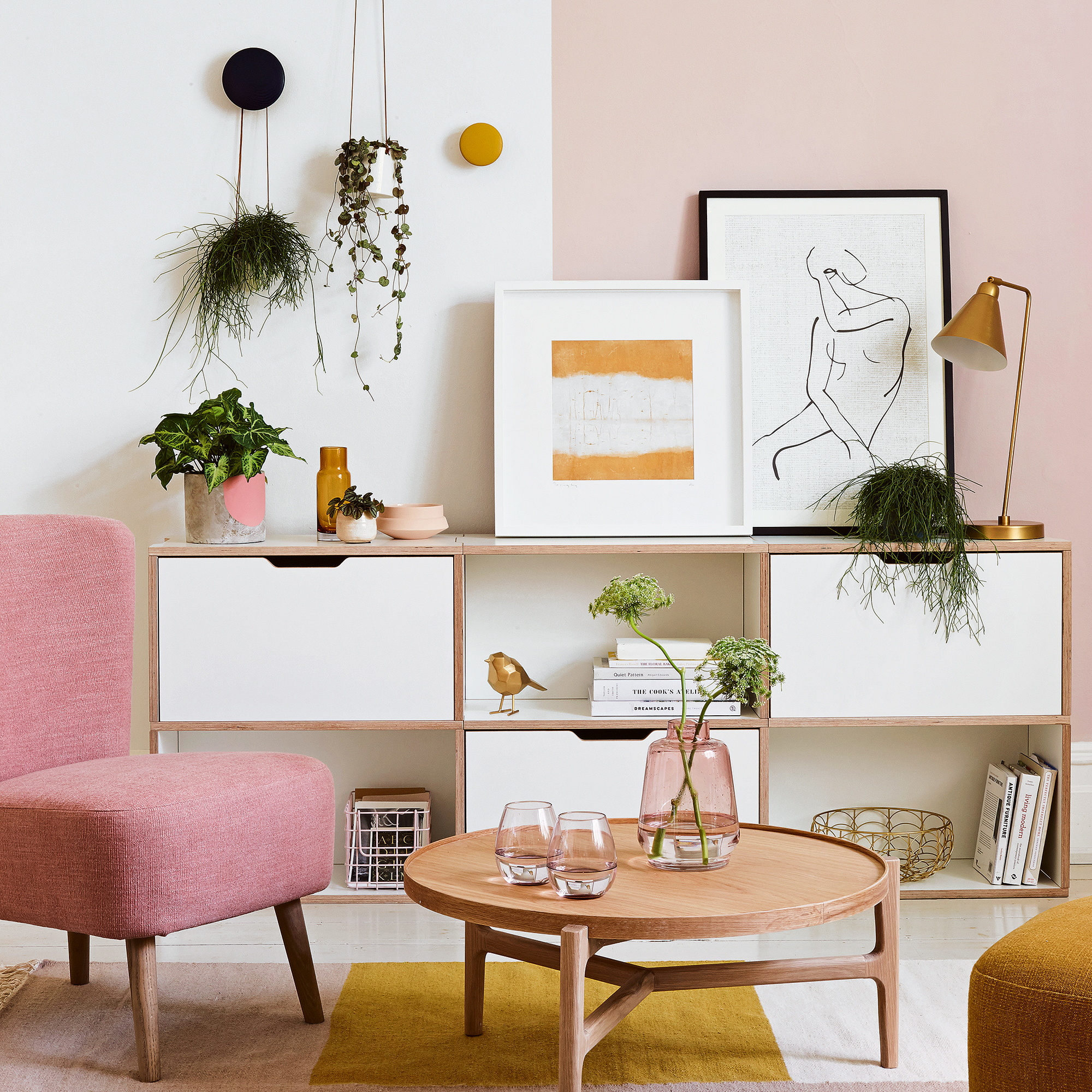
If you’re clever about it, open shelving can play host to items you actually don’t want on show. Lining them with good-looking living room storage ideas offers up space for stashing toys, electronics, remotes, cables, and other unsightly living room essentials.
We’d recommend opting for woven storage baskets, or wooden boxes; natural finishes blend in nicely with any scheme, so you won’t have to replace them if you do decide to restyle your shelves at any point. Stackable designs make great use of vertical space and allow you to separate items by category inside, too.
4. …and consider accessibility
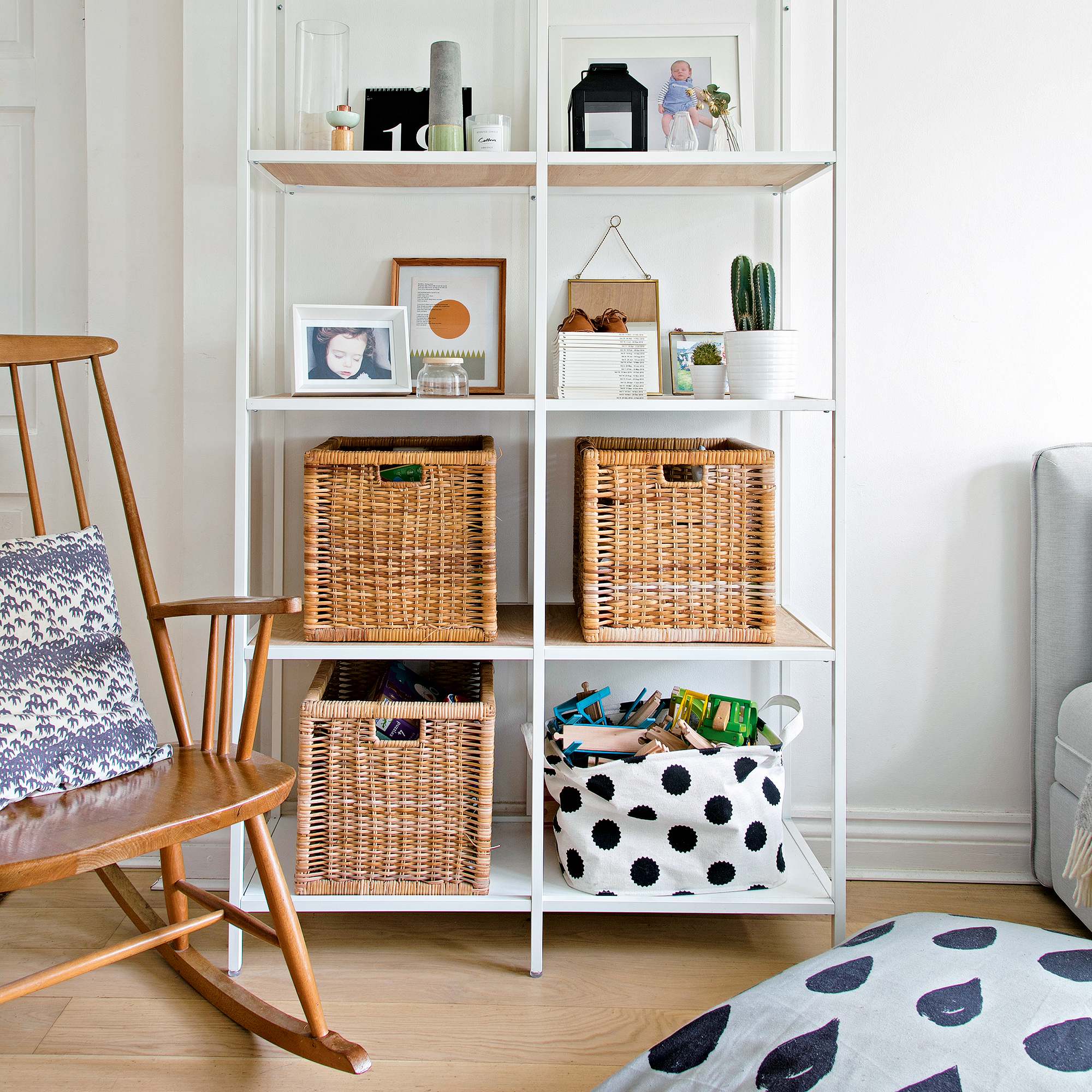
While lining a high shelf with sleek, woven baskets might look pretty, it’s not the most practical place to store items your household needs regular access to, particularly if you’ve got little ones.
Reserve low-level storage for toy storage ideas, games and remotes, to save yourself running back and forth all the time, and assign top-level storage for lesser-used items.
5. Resist filling all the gaps
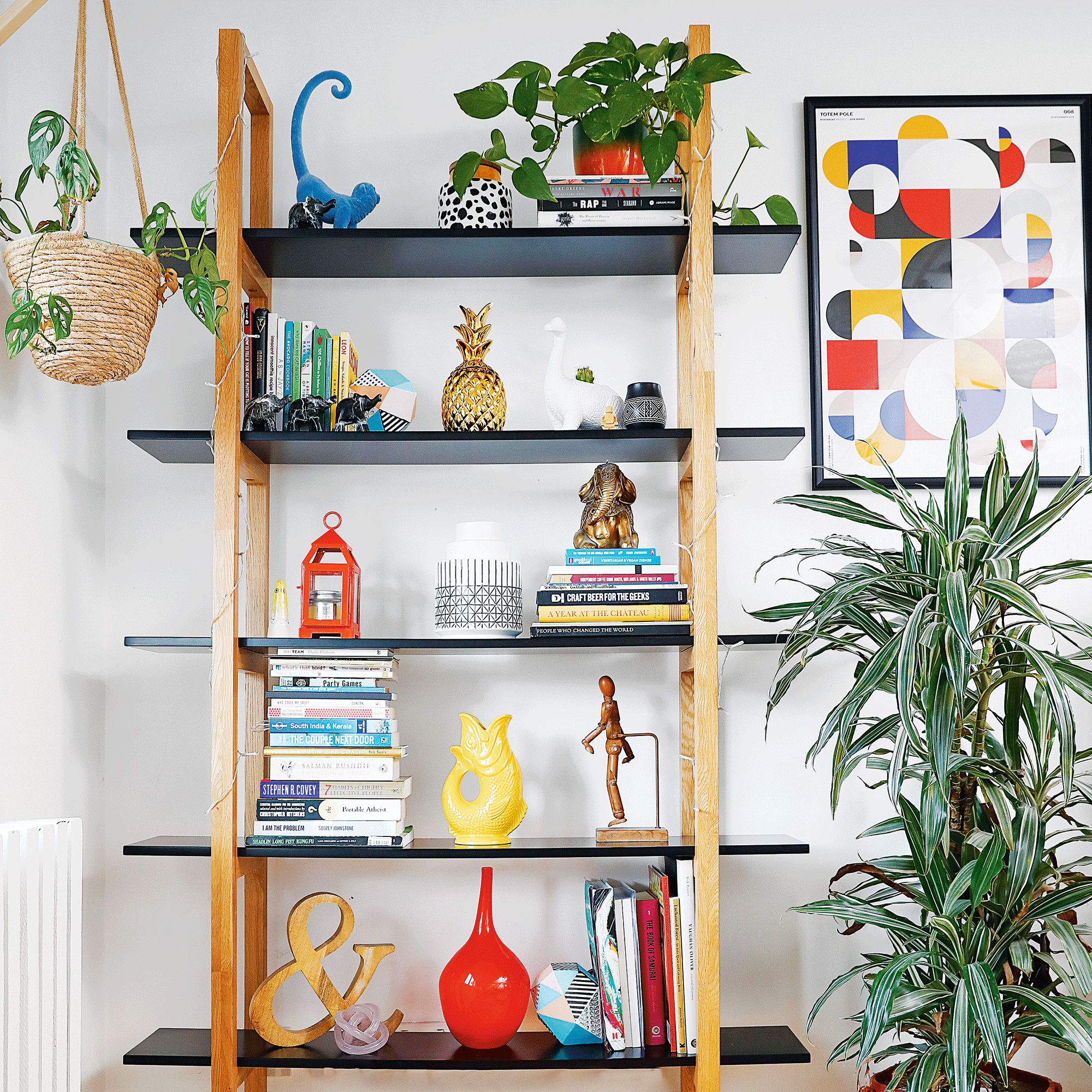
Just because you have space on your living room shelf doesn’t mean you have to fill it. While it’s tempting to cram every last family heirloom and photo into the gaps, it can actually have the opposite effect to what you’re trying to achieve – giving treasured memories space to breathe allows them to truly stand out, and makes for a much less cluttered feel overall.
6. Be mindful of your arrangements
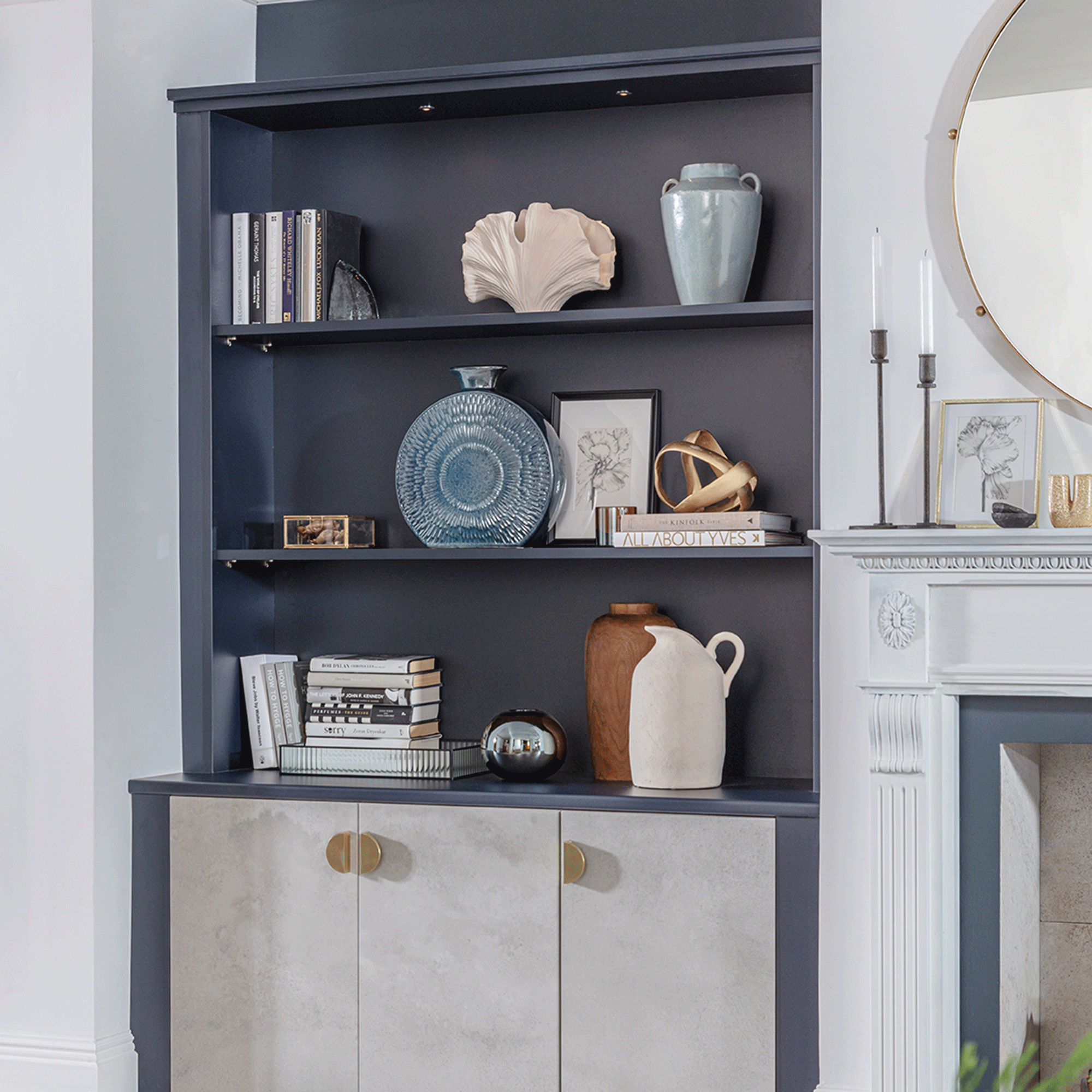
When organising surfaces of any kind, grouping items in odd numbers is more visually appealing than even numbers. Groups of three and five tend to work best, particularly when positioned with the ‘triangle rule’ in mind.
'Arranging items of varying heights in a triangle formation is known to create visual interest and impact,' says home organisation expert Anna Elkington, founder of Melody Maison. 'You’ll need to play around a little to see what works well, but usually the largest item takes centre position with smaller items either side – be sure to leave symmetrical gaps between each grouping for best effect,'
When you're exploring home decor discount codes for the latest deals, it pays to bear in mind what you already have and what could work with its shape and height.
7. Integrate items that mean something to you
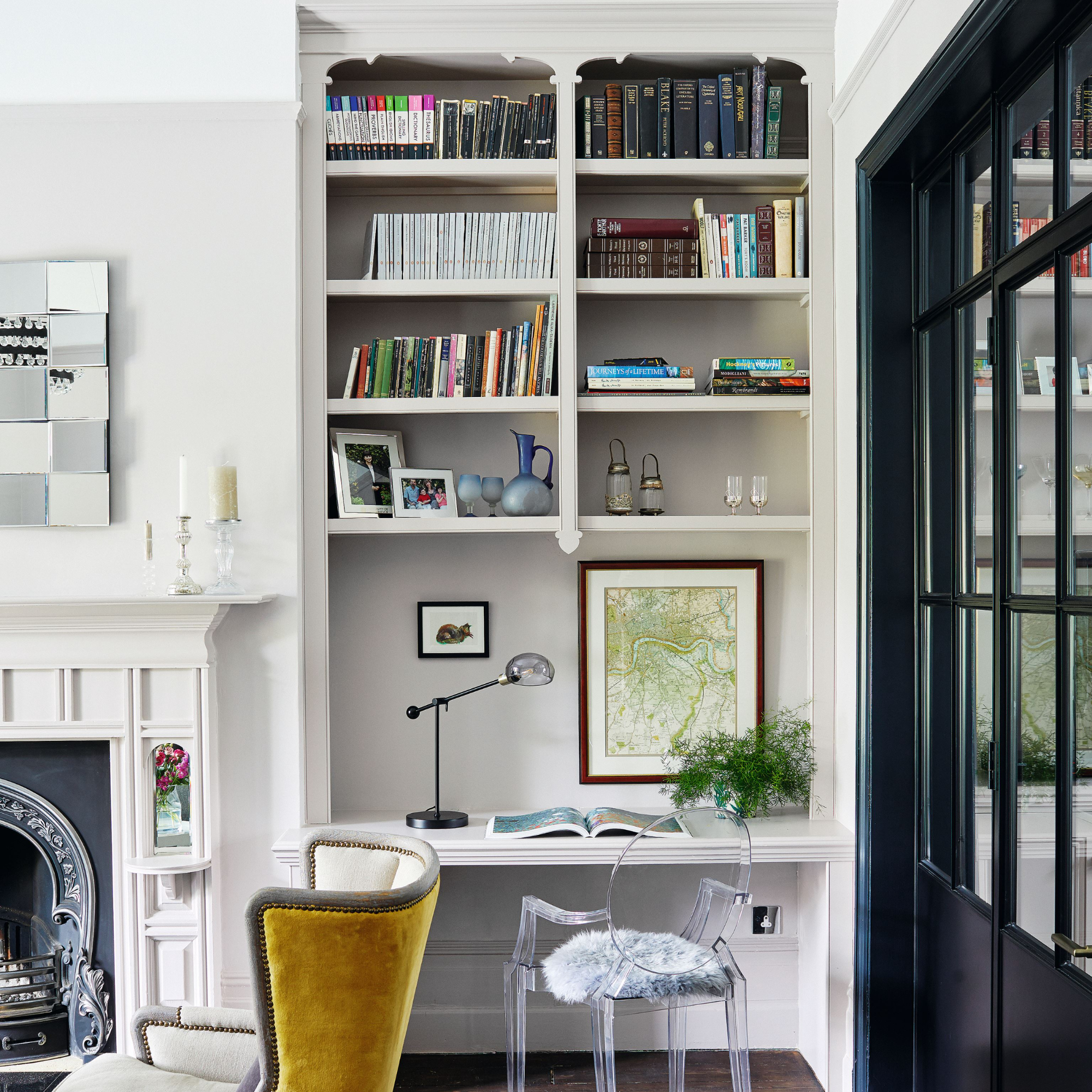
What you display on your shelves is really up to you, but alongside the practical and more ‘decor-led’ items, we’d recommend taking the opportunity to display bits and pieces that reflect who you are and what you love – those that truly mean something.
‘While sticking to particular themes and colours is sensible from a styling point of view, it’s important you find ways to incorporate personal items into your shelving; family photographs, treasured trinkets, holiday momentos, children’s artwork, and so on. This is your chance to tell a story; you’ll be amazed at how much depth and meaning it can bring to the room, you’ll love spending time in there,' says Anna Elkington.
8. Prop up artwork
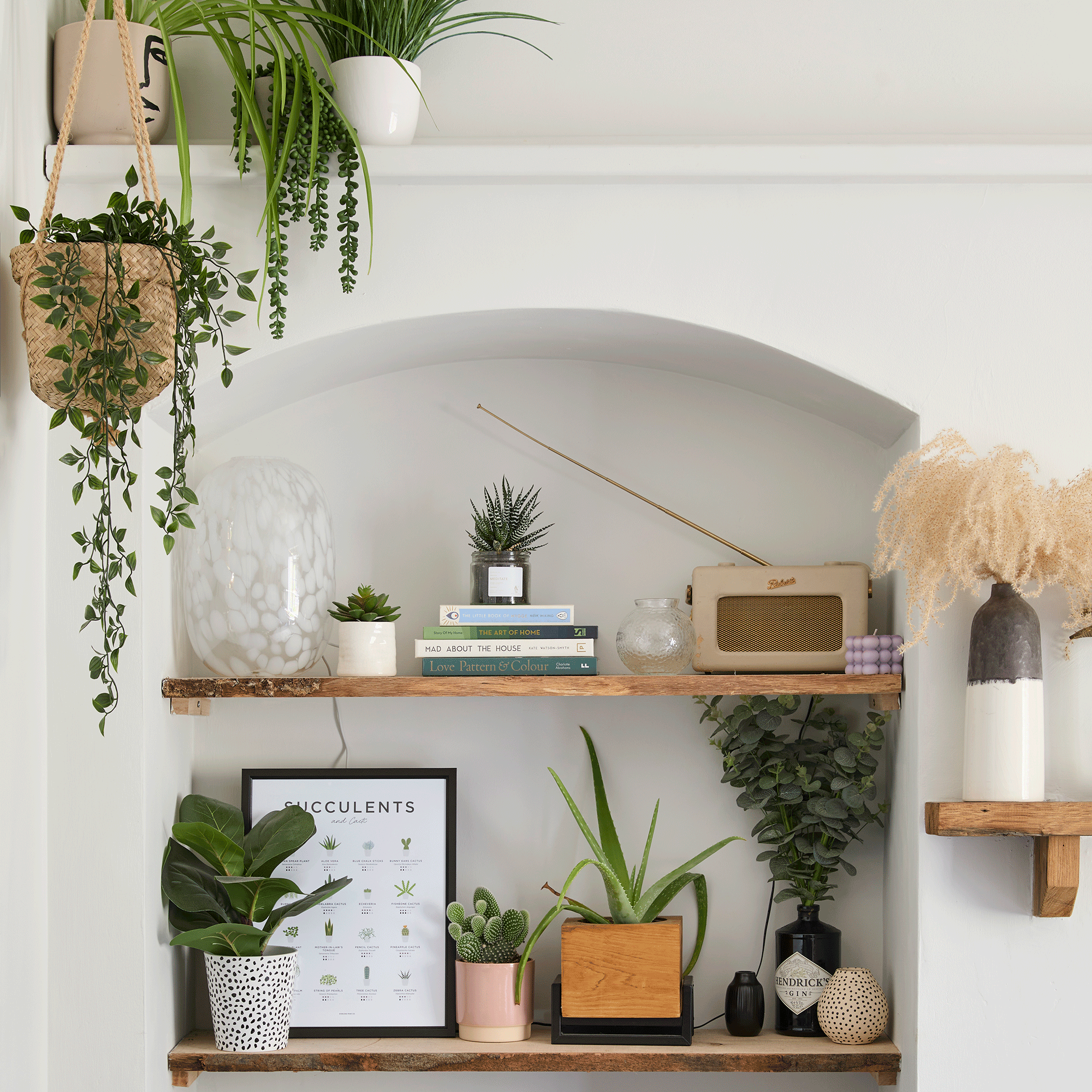
As well as looking lovely, introducing artwork (particularly larger pieces) has the added benefit of breaking up a particularly long run or large wall of shelving – they can be pretty overwhelming to look at otherwise, particularly if you’re a fan of the ‘busy’ look.
Remember that art doesn’t have to be hung – leaning framed photos and paintings against the back of the shelf, or propped up against a stack of books, adds interest whilst also providing a visual break between individual arrangements.
The same goes for any larger object: vases, jugs and candles all create a similarly ‘restful’ effect. You can also use them to draw attention away from anything you don’t want on show, like cables and plug sockets, tatty books or even scrappy paintwork.
9. Build stylish book stacks
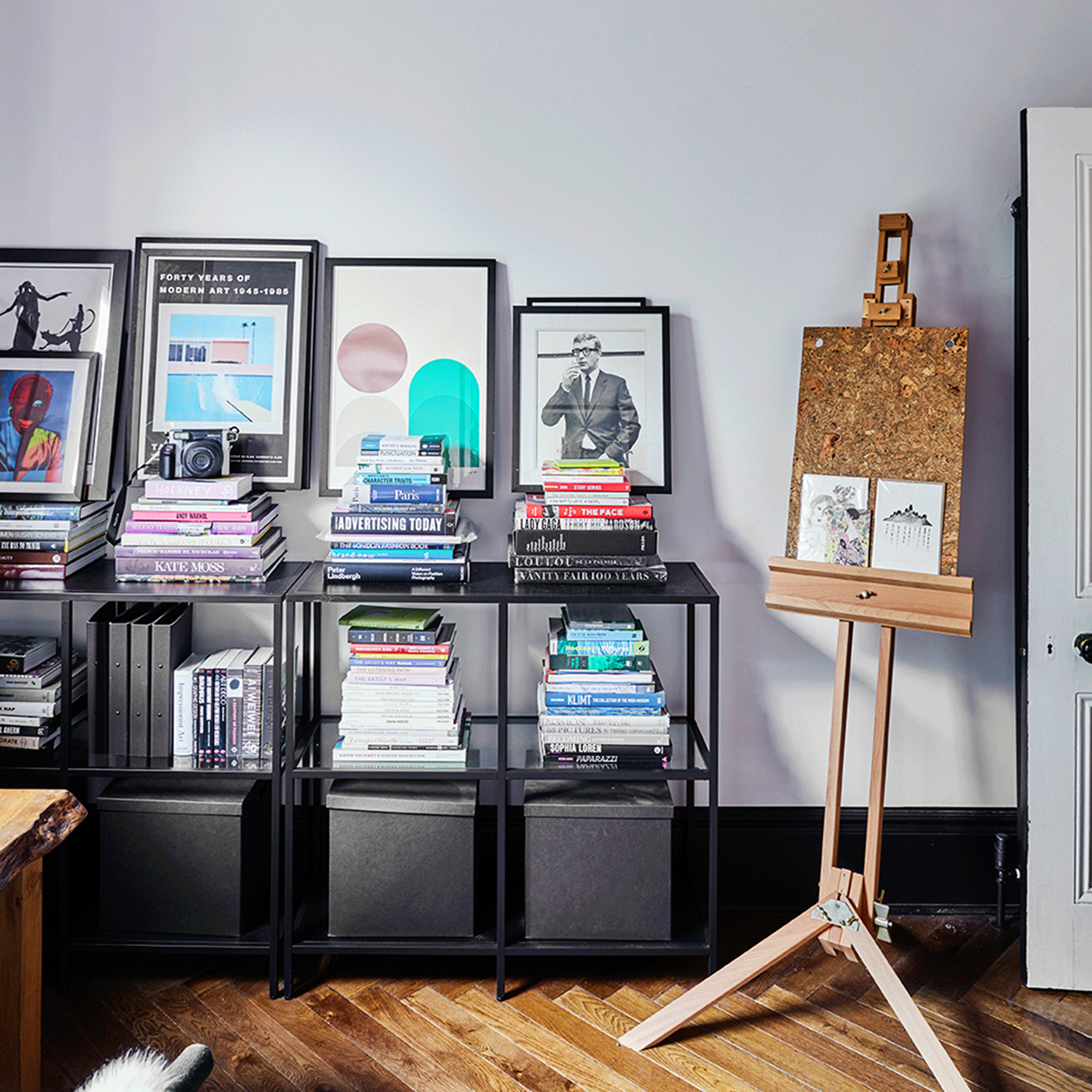
Whether you use your living room shelves as a bookcase or not, creating neat piles of your favourite reads will keep them close to hand, and also offers up great styling potential, too.
‘Books aren’t just for reading, they can also be used to add texture and depth to your shelf. By laying books horizontally, you can easily create a divide or they can act as a plinth to showcase important items; especially helpful for busier, fuller shelves’, says Jonathan Clark.
Start with the bigger, heavier books at the bottom and work down in size. Vary the heights for interest, but keep them perfectly straight to avoid a messy, unfinished feel.
10. Don’t be afraid to mix things up
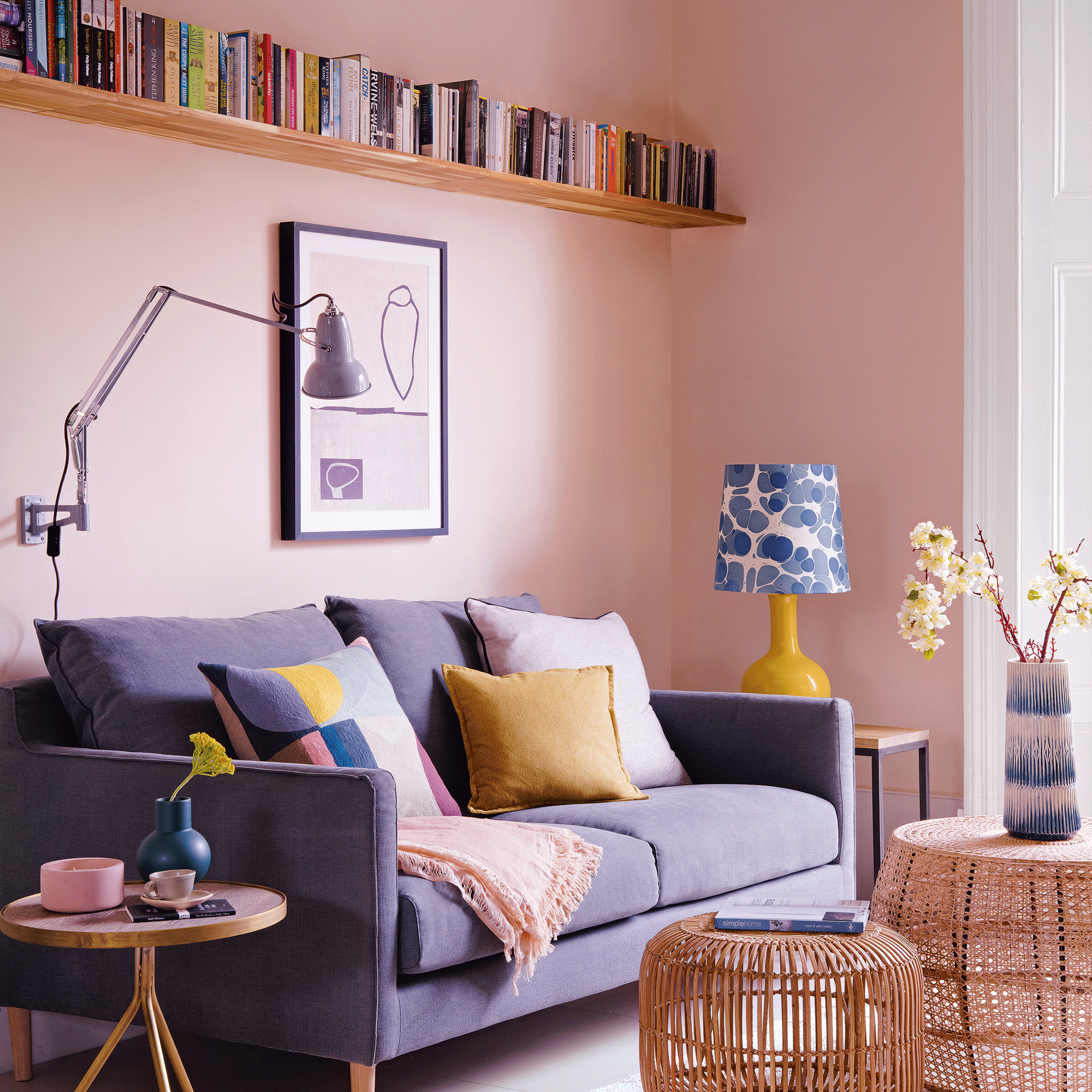
‘Once you’ve settled on an arrangement you like, don’t be afraid to change it later on. Whether adding to it, subtracting from it, or re-arranging it completely, constant evolution is an easy and simple way to keep things feeling fresh and unique,' say the experts at King Living Design Studio.
If you’re a bit nervous about changing things up, take a photograph beforehand. Knowing you can easily recreate your original display will give you more confidence in moving bits and pieces around.
FAQs
Where should shelves be placed in a living room?
This really depends on the size and layout of your room, it’s a bit of a judgement call, really. However, there are a few general ‘rules’ that apply across the board; knowing what these are can help with the decision-making.
‘It may sound obvious, but a reminder that your shelving shouldn’t be an obstruction to any entryway or throughway. Not only will it be inconvenient, it’s also a potential safety hazard. You’ll also want to ensure it doesn’t block any natural light,' says Anna Elkington.
There’s also an opportunity to position shelving to your advantage in a living room, to disguise a TV, or hide cables, wifi-boxes and other bulky electronics, for example. Consider making a statement with an entire wall of shelving, or add character to nooks and alcoves with bespoke built-in designs.
How do you style open shelves in a living room?
Again, there’s not really a standard answer to this question, it’s all down to the individual and what you like to look at. However, again, there’s a few general rules you can abide by, such as grouping items in odd numbers and employing the ‘triangle’ styling rule, creating height from the bottom up.
Experimenting with layering and different heights makes for a dynamic composition,' says Kris Manalo, design lead at Atkin & Thyme. Books are terrific because you can display them at a number of levels, either by positioning them flat, upright or slanted at an angle. If you want to soften the look, add spherical or curved objects, such as bowls, jugs or cloches with plants underneath.
Whatever you do, give items room to breathe and don’t feel the need to fill every space. Overstyled shelves run the risk of losing their artistic charm, so whatever you do, give items room to breathe. Don’t feel like you have to fill every gap – negative space is positive.'